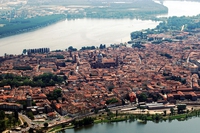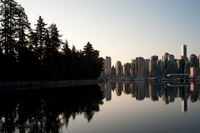
Urban forests, cities’ answer to climate change (and much more)
Urban forests are the local answer to global problems. The benefits are numerous and affect many areas such as the climate, biodiversity, health, tourism.
Urban forests are the local answer to global problems. The benefits are numerous and affect many areas such as the climate, biodiversity, health, tourism.
Architects Stefano Boeri’s call to action on urban forestry asks planners all over the world to consider greening our cities as the core element of all projects.
On the path toward zero waste, 23 pioneering cities and regions committed to significantly cut the amount of waste they generate, to accelerare the transition to a more sustainable future.
Eataly World in Bologna is a culinary city in the country of biodiversity, the largest agri-food centre in the world: an Italian food theme park, if you will. Photos from the opening, so you know what to expect.
Agriculture and climate change are deeply intertwined. The effects of global warming on food supply are dire, whilst world population is increasing. It’s time to change the way agriculture affects the environment, and vice versa.
The celebration aims to raise awareness about the crucial role wetlands play as they’re essential habitats for the conservation of the Planet’s natural heritage.
Honolulu has become the largest US city to make looking at phones illegal while crossing the road. The safety issue linked to handheld devices is gaining importance as accidents increase.
Everything you need to know about the outcome of the COP23 summit in Bonn. The plenary ended in the early hours of Saturday 18 November after a long night of negotiations. Now we’ve moved onto “dialogue”.
Bonn, Germany — The mayors of 25 pioneering cities, including Milan, representing 150 million citizens, have pledged to develop and begin implementing more ambitious climate action plans before the end of 2020 to deliver emissions neutral and climate resilient cities by 2050. These plans will ensure the cities deliver on their share of emissions reductions
Nature is one of the best allies against climate change, but we’ve been underestimating its role. The Nature Conservancy’s latest study demonstrates why natural climate solutions can’t be overlooked.








